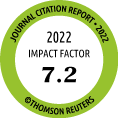| Return to List of Contents in this Supplement | |||||||
|
Effect of Bilastine Upon Nasal
Obstruction |
|||||||
| I Dávila1, J Sastre2, J Mullol3, J Montoro4, I Jáuregui5, M Ferrer6, A del Cuvillo7, J Bartra8, A Valero8 | |||||||
|
1Department of Immunoallergy,
Salamanca University Healthcare Complex, Salamanca,
Spain 2Department of Allergy, Jiménez Díaz Foundation, Madrid, Spain. Biomedical Research Centre Network for Respiratory Diseases (CIBERES) 3Rhinology Unit & Smell Clinic, ENT Department. Clinical and Experimental Respiratory Immunoallergy (IDIBAPS). Clinic Hospital. Barcelona, Spain. Biomedical Research Centre Network for Respiratory Diseases (CIBERES) 4Allergy Section, Elda General Hospital, Alicante, Spain 5Department of Allergy, Basurto Hospital. Bilbao, Spain 6Department of Allergy. Clínica Universidad de Navarra. Medical School. Pamplona, Spain 7Astarté ENT Centre. Cádiz, Spain 8Allergy Unit. Department of Pneumology and Respiratory Allergy. Clinic Institute of Thorax (ICT). Clinical and Experimental Respiratory Immunoallergy (IDIBAPS). Clinic Hospital. Barcelona, Spain. Biomedical Research Centre of Respiratory Diseases (CIBERES) |
|||||||
|
J Investig Allergol Clin Immunol 2011; Vol. 21, Suppl. 3: 2-8 |
|||||||
|
|||||||
|
|
|||||||




